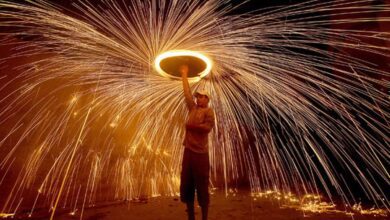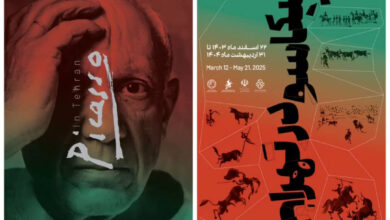National Museum of Iran: A Complete Visitor’s Guide
The National Museum of Iran: A Window into Ancient Civilizations
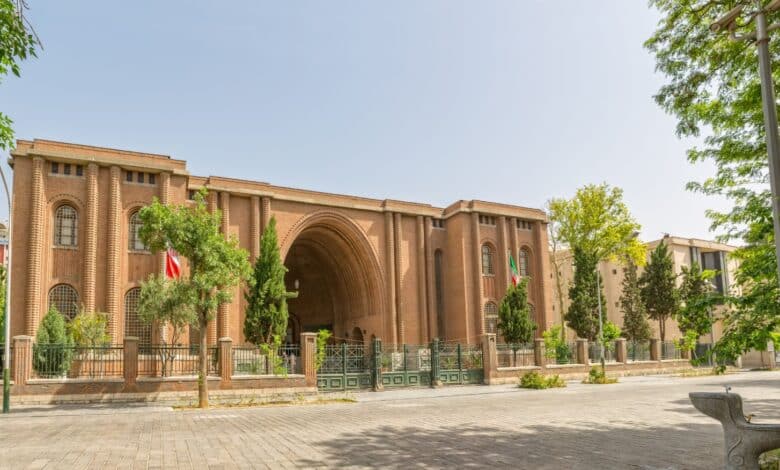
The National Museum of Iran, located in the heart of Tehran, is the country’s premier institution for preserving and showcasing its rich historical and cultural heritage. Often referred to as the “Mother Museum of Iran”, this iconic site offers a journey through thousands of years of history, from prehistoric times to the Islamic era. For travelers passionate about history, archaeology, and art, the museum is a treasure trove of rare artifacts that illuminate the story of one of the world’s oldest civilizations.
As a centerpiece of Iran’s cultural tourism, the museum attracts scholars, historians, and tourists from across the globe. Its vast collection, which includes everything from ancient tools to stunning Islamic manuscripts, represents the depth and diversity of Iranian culture. Whether you’re marveling at the prehistoric artifacts or the intricate Islamic calligraphy, each item provides a glimpse into a bygone era.
This guide will explore the museum’s history, architecture, and must-see exhibits, offering practical tips for visitors. Discover why the National Museum of Iran is a must-visit destination for anyone seeking to understand the roots of human civilization.
The National Museum of Iran consists of the Iran Bastan Museum (Ancient Iran) and the Museum of Islamic Archaeology and Art of Iran, as well as eight research departments, the conservation department, the library and the archives.
The research departments are organized by specific archaeological and historical periods and topics. This Museum houses the largest collections of archaeological objects in the country.
Contents
Historical Background
The National Museum of Iran holds a prominent position in the cultural and historical landscape of the country. As the oldest museum of its kind in Iran, it is an enduring testament to the nation’s commitment to preserving its rich heritage and sharing it with the world.
Founding of the Museum
The foundation of the museum dates back to the 1930s, during the reign of Reza Shah Pahlavi, a period marked by significant modernization and cultural renaissance in Iran.

Recognizing the importance of preserving the country’s historical treasures, the Iranian government enlisted the expertise of French architect André Godard, who designed the building in 1937.
Godard’s design was inspired by Sassanian-era architecture, notably the grand arch of the Taq Kasra in Ctesiphon. This homage to Iran’s ancient legacy established the museum not only as a repository of artifacts but also as a symbolic structure reflecting the grandeur of its heritage.
The museum officially opened its doors to the public in 1937, beginning with a modest collection of archaeological finds from key historical sites across Iran, including Persepolis, Susa, and Ecbatana. These artifacts laid the foundation for a growing collection that would come to represent every era of Iranian history.
Evolution Over the Decades
Since its inception, the museum has undergone several transformations to accommodate its expanding collection and adapt to modern museological practices. Initially comprising a single building, known today as the Museum of Ancient Iran, the institution later expanded with the construction of a second wing, the Museum of Islamic Archaeology and Art of Iran, in 1972. This addition allowed for a more comprehensive representation of Iranian history, separating artifacts from the pre-Islamic and Islamic periods.
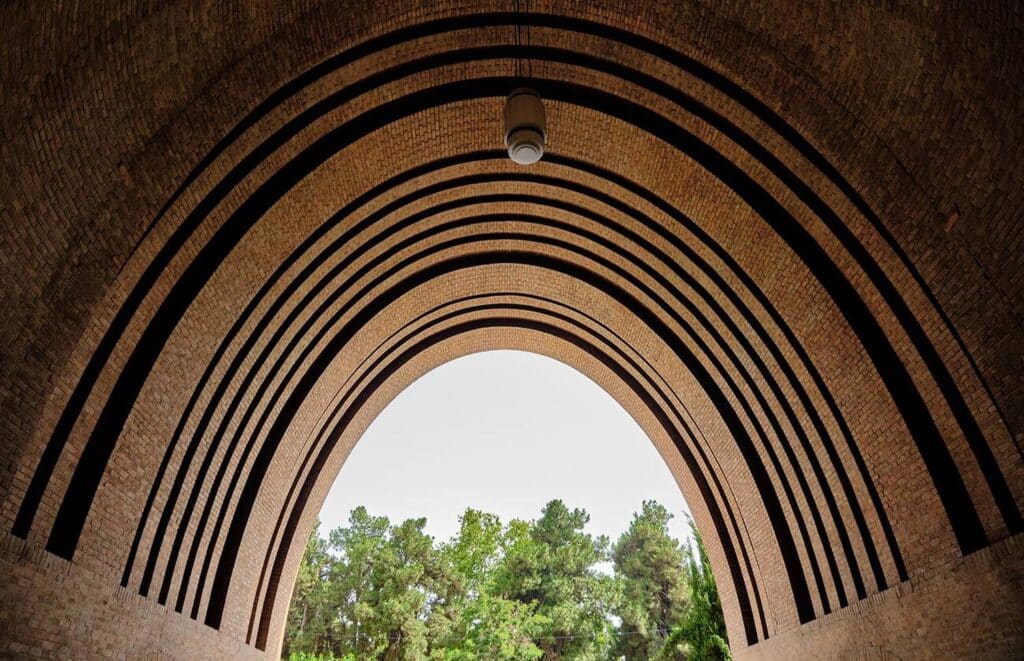
Throughout the decades, the museum has actively engaged in archaeological excavations and research. Many artifacts in its collection were unearthed during pivotal excavations carried out by Iranian and international teams, solidifying its status as a key institution for archaeological studies in the region.
The museum also embraced the use of modern technology and conservation techniques to better preserve its artifacts. Collaborative efforts with global institutions have led to the introduction of advanced practices for artifact restoration, display, and documentation.
Role in Preserving Iranian History

The National Museum of Iran serves as a custodian of the nation’s history, safeguarding its cultural heritage for future generations. Its extensive collection spans over 300,000 artifacts, representing a chronological and thematic narrative of Iranian civilization. Each piece housed within its walls tells a unique story, offering invaluable insights into the lives, beliefs, and artistic achievements of the people who shaped Iran’s history.
Through its exhibitions, the museum not only celebrates Iran’s past but also fosters a sense of national pride. It acts as an educational hub, enlightening visitors—both Iranian and international—about the pivotal role Iran played in the development of human civilization. From the dawn of the agricultural revolution to the height of the Persian Empire and the flowering of Islamic art, the museum’s displays underscore the continuity and innovation of Iranian culture.
In addition to its physical collection, the museum plays a pivotal role in advocating for the preservation of Iran’s cultural sites. It collaborates with UNESCO and other international organizations to protect and promote Iranian heritage, both within the country and on the global stage.
The National Museum of Iran stands as a bridge between the past and the present, offering visitors a deeper understanding of Iran’s complex and fascinating history. Its enduring mission is to preserve, educate, and inspire, making it a cornerstone of cultural and historical identity in Iran and beyond.
Architecture and Layout
The National Museum of Iran is not only a repository of historical artifacts but also a work of art in itself. Its architecture reflects a blend of traditional Iranian styles and modern design principles, making it a visual and cultural landmark in Tehran.
Exterior and Interior Design

The original building, known as the Museum of Ancient Iran, is a masterpiece designed by French architect André Godard in 1937. The structure’s façade features a striking brick arch that draws inspiration from the iconic Taq Kasra, a Sassanian-era palace in Ctesiphon, Iraq. This imposing entrance, with its curved form and intricate brickwork, symbolizes Iran’s ancient architectural heritage.
The building’s brick construction, with its reddish hue, pays homage to the traditional Persian craftsmanship seen in historical sites such as Persepolis and Yazd. The symmetry and balance of the design reflect the timeless principles of Persian architecture while maintaining the functionality required of a modern museum.
Inside, the Museum of Ancient Iran features wide, open halls with high ceilings that evoke a sense of grandeur. The neutral tones of the walls and floors provide a subtle backdrop, allowing the artifacts to stand out. Natural light filters through strategically placed windows, creating a serene ambiance that complements the historical significance of the exhibits.
The second building, the Museum of Islamic Archaeology and Art of Iran, completed in 1972, takes a more modern approach while integrating elements of Islamic design. Its geometric motifs, inspired by Islamic architecture, contrast with the older building’s ancient-inspired features. The interiors here are designed to highlight the intricate artistry of Islamic-era artifacts, with carefully arranged lighting and display cases that enhance their detail and craftsmanship.
Influence of Iranian and Modern Architectural Styles
The museum’s architecture is a seamless blend of Iranian heritage and modernist functionality. The incorporation of the Taq Kasra-inspired arch in the Museum of Ancient Iran is a tribute to the country’s ancient achievements, while the building’s simplicity and efficiency reflect the European architectural trends of the early 20th century.
The newer wing incorporates Islamic geometric patterns and forms, echoing the rich tradition of Persian-Islamic design. This combination of styles not only celebrates Iran’s architectural evolution but also makes the museum itself a visual narrative of the country’s history, bridging the pre-Islamic and Islamic eras.
Featured Galleries and Collections
The National Museum of Iran houses a rich array of artifacts organized into thematic galleries, each offering a journey through distinct periods of the region’s history. Visitors can trace the evolution of human civilization from prehistoric times to the Islamic era, gaining a deep appreciation of Iran’s role in shaping global heritage.
Prehistoric Iran Gallery
The Prehistoric Iran Gallery is the starting point for exploring the earliest chapters of human history. This section showcases artifacts that span the Paleolithic, Neolithic, and Chalcolithic periods, reflecting the ingenuity of early inhabitants of the Iranian plateau.
Highlights of the Prehistoric Collection:
Stone tools from the Lower Paleolithic period, some over a million years old, reveal the survival strategies of early humans.
Pottery fragments from the Neolithic period display the earliest attempts at decoration, highlighting the growing complexity of early societies.

Clay figurines, such as the famed fertility goddesses, provide a glimpse into spiritual practices and social structures.
Artifacts from ancient settlements like Tepe Sialk and Chogha Golan document advancements in agriculture, architecture, and community organization.
This gallery emphasizes the cultural continuity of early Iranian societies, demonstrating how innovations like pottery-making and farming contributed to the development of civilization.
Ancient Iran Gallery
The Ancient Iran Gallery transports visitors to the height of Persian civilization, covering the Elamite, Achaemenid, Parthian, and Sassanian periods. These eras established Iran as a cultural, political, and military powerhouse in the ancient world.
Highlights of the Ancient Collection:
The Cyrus Cylinder (replica): Known as the world’s first charter of human rights, this artifact symbolizes the enlightened policies of Cyrus the Great, founder of the Achaemenid Empire.
Achaemenid reliefs and statues from Persepolis showcase the empire’s grandeur, including intricate carvings of delegations bringing tribute to the Persian king.
The Oxus Treasure: A remarkable collection of gold and silver artifacts reflecting Achaemenid craftsmanship and wealth.
Sassanian silver plates and coinage feature intricate designs that celebrate royal power and religious devotion.
This gallery not only presents the material wealth of ancient Iran but also delves into its contributions to art, governance, and the cultural exchanges that flourished along the Silk Road.
Islamic Iran Gallery
The Islamic Iran Gallery is a vibrant testament to the country’s artistic and intellectual flourishing during the Islamic era. This section spans over a millennium, highlighting the intricate interplay between tradition and innovation in art, science, and spirituality.
Highlights of the Islamic Collection:
Calligraphy masterpieces: The gallery features stunning Quranic manuscripts and examples of Persian calligraphy, showcasing the evolution of this revered art form.

Ceramics and tiles: Decorative objects adorned with geometric patterns, floral motifs, and Quranic verses illustrate the fusion of utility and beauty in Islamic art.
Textiles and carpets: Fine Persian rugs and fabrics demonstrate the expertise of Iranian artisans, known worldwide for their unparalleled skill.
Astronomical instruments and scientific texts: These artifacts reflect the contributions of Iranian scholars to the Islamic Golden Age.
Through its exhibits, this gallery highlights the lasting influence of Islamic art and culture, from architecture and poetry to philosophy and science.
Temporary Exhibitions
The National Museum of Iran regularly hosts temporary exhibitions, providing fresh perspectives on Iranian heritage and fostering cultural exchange. These exhibitions often feature collaborations with international museums and institutions, showcasing rare artifacts or exploring specific themes.
Notable Past Exhibitions:
“Persian Art Through the Ages”: An exploration of Iran’s artistic legacy, featuring loaned artifacts from renowned museums worldwide.
“Silk Road Connections”: A focus on the trade networks that linked Iran with China, India, and Europe, emphasizing shared cultural influences.
“Women in Ancient Iran”: A curated exhibit highlighting the roles of women in Iranian society through archaeological finds, texts, and art.
Top 10 Must-See Artifacts in the Museum of Ancient Iran
- The Salt Man
- A naturally mummified man discovered in a salt mine in Zanjan, dating back to the Sassanian period. His clothing and tools offer insights into ancient mining life.
- Cyrus Cylinder Replica
- A copy of the original artifact held in the British Museum, this cylinder is often referred to as the “first charter of human rights,” originating from the Achaemenid period.
- Persepolis Stone Reliefs
- Carvings from the Achaemenid Empire that depict court life, ceremonies, and mythological motifs.
- The Life-Size Bronze Statue of Shami Man
- A Parthian statue demonstrating remarkable craftsmanship and detailing.
- Clay Tablets from Susa
- Examples of early administrative records and proto-writing systems, dating back to the Elamite period.
- Pottery from Tepe Sialk
- Prehistoric ceramics showcasing early Iranian craftsmanship and decorative motifs.
- Elamite Artifacts from Chogha Zanbil
- Objects including inscribed bulls and glazed ceramics from this UNESCO World Heritage site.
- Jiroft Culture Relics
- Unique chlorite stone vessels depicting mythical creatures, hinting at the sophistication of this early Iranian civilization.
- Marlik Golden Cups
- Stunning examples of metalwork from the Iron Age, featuring animal motifs.
- Luristan Bronzes
- Decorative bronze artifacts such as ceremonial axes and horse trappings from the western regions of Iran.
Top 10 Must-See Artifacts in the Museum of the Islamic Era
- Ilkhanid Mihrab (Prayer Niche)
- From Dar-e Behesht, this mihrab is adorned with intricate tile work and calligraphy.
- Reza Abbasi Pen and Ink Paintings
- Exquisite works by this renowned Safavid-era artist.
- The Quran of Ahmad Sohravardi
- A 14th-century illuminated manuscript in the Mohaqqaq script.
- Safavid Carpets
- Representing some of the finest examples of Persian carpet weaving, with intricate floral and geometric designs.
- Timurid Tiles
- Examples of Moarraq technique tiles showcasing the apex of Islamic decorative arts.
- Seljuk Pottery
- Featuring underglaze painted ceramics with both Iranian and Chinese motifs.
- Qajar Lacquered Artifacts
- Mirror frames and pen cases adorned with vibrant oil-painted miniatures.
- Bronze Astrolabe
- A medieval scientific instrument used for navigation and astronomy, exemplifying Islamic innovation.
- Ceramics from Kashan and Kerman
- High-quality glazed pottery highlighting regional craftsmanship.
- Illuminated Manuscripts of Shahnameh
- Pages from Ferdowsi’s epic, showcasing the brilliance of Persian miniature painting.
Visitor Information
The National Museum of Iran is located in central Tehran, making it convenient for both locals and international visitors. The museum’s address is:
Si-e Tir Street, Emam Khomeini Avenue, Tehran, Iran.
Getting There:
Public Transport:
The museum is easily accessible via Tehran’s metro system. The nearest station is Emam Khomeini Metro Station (Line 1), just a short walk away.
Several bus routes also serve the area, with stops close to the museum.
By Car:
Visitors can reach the museum by car or taxi. Limited parking is available nearby, but public transport is recommended due to Tehran’s busy traffic.
Pedestrian Access:
Si-e Tir Street is a vibrant pedestrian-friendly area, ideal for exploring on foot before or after visiting the museum.
The museum’s central location makes it an ideal starting point for exploring Tehran’s cultural and historical sites.
Opening Hours and Ticket Pricing
Opening Hours:
The museum is open daily from 9:00 AM to 5:00 PM, except on certain national holidays. It’s recommended to check ahead for updates on opening times.
Ticket Pricing:
Tickets for international visitors are priced at 1000,000 IRR (subject to change).
Guided Tours and Language Support
The National Museum of Iran offers a range of services to enhance the visitor experience:
Guided Tours:
Professional guides are available to provide in-depth tours of the museum. Guided tours typically last 1.5 to 2 hours, covering major galleries and artifacts.
Visitors can arrange for group or private tours upon arrival or book in advance.
Language Support:
Information plaques in the museum are written in Persian and English.
Audio guides in multiple languages, including French, German, and Arabic, can be rented at the entrance.
Some tours are conducted in English for international visitors; it’s best to confirm availability ahead of time.
Self-guided exploration is also well-supported with maps and brochures available at the entrance.
Nearby Attractions
The museum’s location on Si-e Tir Street places it close to several other notable attractions, allowing visitors to explore more of Tehran’s rich history and culture.
- Glassware and Ceramics Museum of Iran (Abgineh Museum):
- A short walk from the National Museum, this museum displays exquisite glass and ceramic artifacts from various historical periods.
- Golestan Palace:
- A UNESCO World Heritage Site located about 10 minutes away by car or metro, showcasing stunning Qajar-era architecture and gardens.
- Tehran Bazaar:
- Ideal for exploring local commerce and traditional Iranian goods, the bazaar is just a short distance from the museum.
- Museum of the Qasr Prison:
- A fascinating historical site that offers insights into Iran’s modern history, accessible by taxi or metro from the museum.
Visitors can easily plan a full day exploring these cultural landmarks, all within close proximity to the National Museum of Iran.
Educational and Research Role of the National Museum of Iran
The National Museum of Iran is not just a repository of historical artifacts but also a vibrant center for education and research. Through its contributions to archaeological studies, international collaborations, and educational programs, the museum plays a vital role in fostering understanding and appreciation of Iran’s rich heritage.
Contributions to Archaeological Research
The museum has long been a cornerstone of archaeological research in Iran, supporting both fieldwork and academic studies:
- Preservation of Discoveries: Many artifacts from major archaeological excavations, such as those at Persepolis, Susa, and Tepe Sialk, are preserved and studied here.
- Research Facilities: The museum provides state-of-the-art facilities for artifact analysis, including laboratories for conservation and restoration. These facilities support the study of materials, dating techniques, and the reconstruction of ancient technologies.
- Publication of Findings: The museum frequently publishes research papers, excavation reports, and catalogs, contributing to global scholarship on ancient and Islamic-era Iran.
- Support for Archaeologists: The museum collaborates with universities and research institutions, offering resources and funding for Iranian and international archaeologists working in the region.
Through these efforts, the museum not only safeguards Iran’s heritage but also contributes to our broader understanding of human history.
Collaborative International Projects
The National Museum of Iran has actively partnered with international institutions to advance archaeological research and cultural understanding:
- Joint Excavations: Collaborative projects with institutions like the Louvre Museum, British Museum, and German Archaeological Institute have unearthed significant artifacts and insights into Iran’s ancient civilizations.
- Exchanges and Loans: The museum participates in global exhibitions, loaning key artifacts to museums worldwide. For example, the “Persian Empire” exhibition at the British Museum showcased treasures from the National Museum alongside other collections.
- Training Programs: Through partnerships with foreign universities and cultural organizations, the museum facilitates training in conservation techniques, digital documentation, and modern archaeological practices.
- Cultural Dialogues: The museum frequently hosts international conferences and symposia, fostering dialogue on topics such as heritage preservation and the ethical treatment of artifacts.
These collaborations enhance the global recognition of Iran’s cultural heritage and build bridges between nations through shared history and scholarship.
Educational Programs for Students and Enthusiasts
The National Museum of Iran is deeply committed to education, offering programs designed to engage audiences of all ages and backgrounds:
- Workshops for Students: The museum regularly hosts interactive workshops for school and university students, covering topics such as archaeology, ancient art, and Islamic culture.
- Lectures and Seminars: Scholars and experts deliver lectures on various historical and cultural topics, open to both professionals and the general public.
- Hands-On Learning: Programs like artifact-handling sessions and mock archaeological digs allow participants to experience the work of archaeologists firsthand.
- Digital Resources: To reach a wider audience, the museum offers online resources, including virtual tours, educational videos, and downloadable guides for teachers.
- Specialized Courses: For enthusiasts, the museum organizes short courses on Persian art, ancient technologies, and the history of the Silk Road, often in collaboration with local and international experts.
By engaging students, scholars, and visitors, the museum ensures that Iran’s cultural legacy is not only preserved but also actively passed on to future generations.
Cultural and Global Significance of the National Museum of Iran
The National Museum of Iran holds a vital place in the global appreciation of Iranian history and culture. Its efforts to preserve and present Iran’s heritage contribute significantly to international understanding of the ancient and modern Middle East. Collaborations with UNESCO and other global organizations further solidify its role as a bridge between Iran and the world.
Impact on Global Understanding of Iranian History
The museum provides a comprehensive narrative of Iran’s historical and cultural evolution, offering invaluable insights into a civilization that has shaped world history:
- Highlighting Iran’s Role in Early Civilizations: By showcasing artifacts from prehistoric periods to the rise of great empires, the museum illustrates Iran’s pivotal role in the development of agriculture, urbanization, and trade.
- Connecting Cultures: Items from the Achaemenid and Sassanian periods reveal Iran’s connections with other major civilizations, such as Greece, Rome, India, and China, through diplomacy, trade, and cultural exchanges.
- Promoting Academic Scholarship: The museum’s collections are extensively studied by international scholars, resulting in publications and exhibitions that bring Iranian history to a global audience.
- Combatting Misconceptions: Through its exhibitions and partnerships, the museum presents an authentic and nuanced picture of Iran’s rich history, countering oversimplified narratives often seen in mainstream media.
These contributions foster a deeper understanding of Iran’s influence on art, science, governance, and religion, enriching the global narrative of human civilization.
Museum of Ancient Iran photos




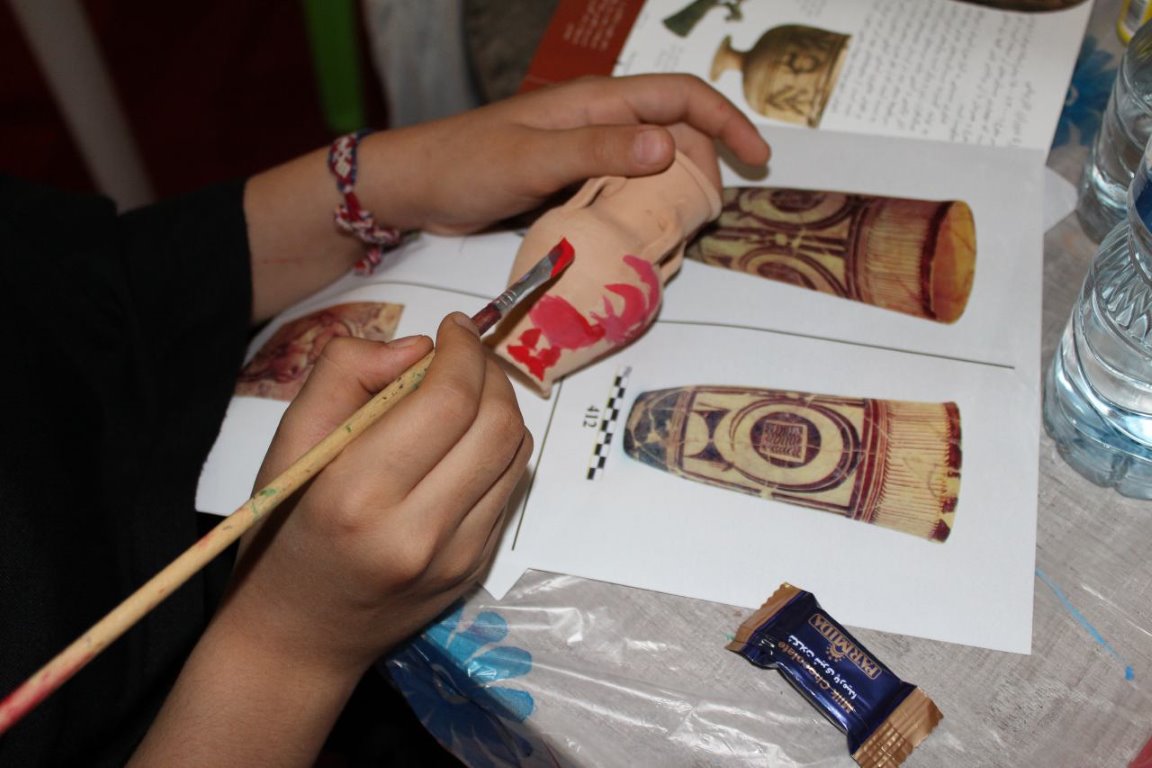

UNESCO’s Recognition and Partnerships
The museum’s global significance is underscored by its close collaboration with UNESCO and other cultural organizations. These partnerships aim to preserve Iran’s heritage and promote cultural exchange:
- World Heritage Connection: The museum houses artifacts from many of Iran’s UNESCO World Heritage Sites, such as Persepolis, Chogha Zanbil, and the Golestan Palace. It acts as a repository and research hub for understanding these iconic sites.
- Educational Initiatives: In collaboration with UNESCO, the museum participates in programs to educate local communities and international audiences about the importance of cultural heritage preservation.
- Exhibitions and Loans: UNESCO has supported exhibitions that feature Iranian artifacts abroad, emphasizing their role in global cultural history. Such initiatives have helped foster appreciation for Iranian art and history worldwide.
- Capacity Building: Joint programs with UNESCO focus on training Iranian museum professionals in conservation, curatorial practices, and heritage management, ensuring sustainable preservation of Iran’s cultural assets.
Global Dialogues Through Cultural Exchange
Through partnerships with UNESCO and other global institutions, the National Museum of Iran has become a key player in fostering dialogue about cultural preservation, ethics in archaeology, and the importance of protecting world heritage during times of conflict.
Conclusion
The National Museum of Iran stands as a vital destination for anyone seeking to understand the roots of human civilization and the enduring influence of Persian culture. Its extensive collections, covering thousands of years of history, offer visitors a rare opportunity to connect with the artistic, scientific, and spiritual achievements of ancient and Islamic-era Iran.
Why the National Museum of Iran Is a Must-Visit
- Comprehensive Historical Journey: Few places in the world provide such a seamless narrative of human history, from prehistoric artifacts to the masterpieces of the Islamic Golden Age.
- Architectural and Cultural Significance: The museum itself, with its iconic design and well-curated galleries, is a masterpiece of modern architecture inspired by ancient Persian aesthetics.
- Global Relevance: The museum highlights Iran’s pivotal role in global history, offering insights into the exchanges and innovations that shaped civilizations across continents.
- Dynamic Visitor Experience: With its guided tours, temporary exhibitions, and educational programs, the museum offers an engaging experience for history enthusiasts and casual visitors alike.
Final Thoughts on Its Legacy and Influence
The National Museum of Iran is more than a repository of artifacts—it is a guardian of a nation’s identity and a bridge to the world. Its dedication to preserving and sharing Iran’s cultural heritage fosters a deeper understanding of the interconnectedness of human civilizations.
Through its collaborations, educational programs, and ongoing research, the museum continues to inspire curiosity and respect for the past. For visitors, it is not merely a museum but a gateway to exploring the rich history, art, and culture of Iran.
Visiting the National Museum of Iran is not just about seeing ancient artifacts—it is about connecting with the stories of people who shaped the world we live in today. It is a place where history comes alive, leaving an indelible impression on all who walk through its doors.
Read More
